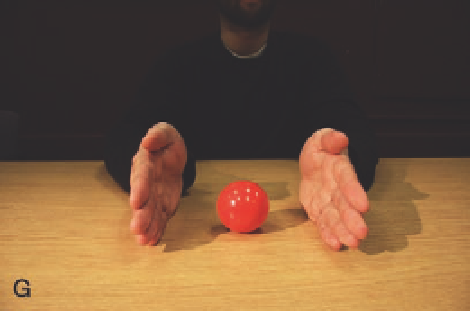Image Processing Reference
In-Depth Information
away from the ball as if getting ready to hit the card with the ball on it. The
hand then moves about an inch or two forward (frame left) in one frame then
stops and holds, appearing to hit the ball. The ball and card direction and
replacement lineup are reversed, and they start moving frame left. The overall
effect is that the hands are bouncing the ball on the cards back and forth.
ExErcisE Fig 3.F
The middle
position of the animation.
Each time a hand hits the ball and card, it should move closer to the other
hand, as if to squash the ball and card. As a matter of fact, that is exactly what
you do. This merging of the hands on a frame-by-frame basis can happen
fairly fast (perhaps over 40 frames). When the hands get close to touching
the card on either side, close the hands completely in one move (removing
the card completely) and hold the closed hands with no card for about eight
frames. Open the hands and reveal a dimensional red ball (if you can find one)
or any other object that you want. When you open the hands include one
ease-in movement, slightly revealing the ball or object of your choice, shoot a
frame, then open the hands enough to see the ball or object in full. Hold the
hands and object for ten frames.
ExErcisE Fig 3.g
The final shot
of the hands apart enough to
reveal the final dimensional ball.
You have successfully mixed techniques in front of the camera and practiced
some of the “trick” techniques the early filmmakers like Melies used. Two other
great references for this mixing of techniques are the film
Door
by the English


Search WWH ::

Custom Search